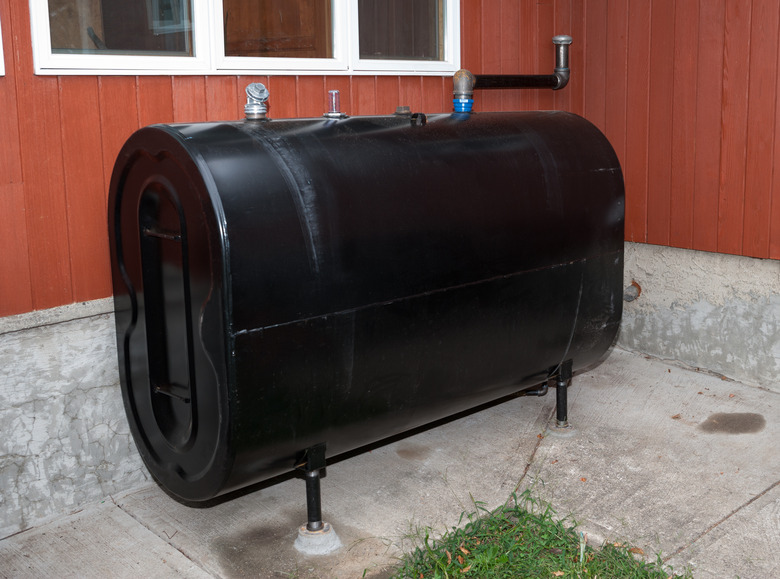How To Fix A Leaking Oil Tank
We may receive a commission on purchases made from links.
A leaking oil tank is not something that should be ignored. If you have an oil tank that is original to a home that's over 20 years old, you may want to consider replacing the tank before any issues arise. Finding yourself having to deal with a leaking oil tank during a blizzard can be handled, but it's not the best situation to be in. There are a few products, like epoxies or other oil-resisting patchwork, that claim they will stop an oil leak, but why would you only want to put a bandage on a possible environmental catastrophe? Other issues that may arise include buildup of sludge and moisture, which can cause poor performance and reliability of the oil-fired equipment that keeps you warm during a storm.
Oil Tank Leaking From the Bottom
Oil Tank Leaking From the Bottom
If you have ever watched footage of an oil spill on the news, you will notice that the oil is floating on the surface of the water. This shows that oil is lighter than water. That being said, water will accumulate on the bottom of an oil tank. The question you may have is: Where does the water come from, and why is this important?
Water can get into your oil tank from various sources. Some of it is simply condensation forming inside the oil tank. Other possibilities are a vent or a fill pipe for the oil tank that was not capped properly. It could even be from the transportation to your home. Either way, the water on the bottom of your oil tank will eat away and rot the steel, causing the tank to leak from the bottom.
Stopping the Oil Leak
Stopping the Oil Leak
The best cure for any leak is to not have it at all, so being oil tank aware will help your wallet as well as the environment. If you still find yourself needing a quick temporary patch in an emergency, there are some products on the market. These products are as simple as a magnet to put on the refrigerator and are only to be used in an emergency situation to get you through that blizzard or get you on the schedule for your local oil heating professional to replace the tank. Any patchwork you can come up with will not safely hold for long against the 275 gallons of oil that could possibly be in a full leaking oil tank.
Oil Leak Preparedness
Oil Leak Preparedness
Home heating oil is not black but actually red in color. The fuel is dyed red for off-highway use, whereas diesel that is used in trucks is different in color for highway use. A black stain under your oil tank may be caused by an oil leak and not from the oil alone but typically from the paint coming off the side of the tank. Fuel oil alone that is undyed is actually yellowish in color, so a leaking oil tank will usually have a reddish puddle.
As the oil leaks onto concrete, it will look much worse than it may actually be, but it still needs to be professionally addressed immediately. If you find what looks like a small leak from your oil tank, put a little absorbing pad or even kitty litter under the tank and call an oil-heating professional and let them assess the situation. Either way, if the tank has some age to it, get ready to get out the checkbook.
What Does an Oil Tank Leak Look Like?
What Does an Oil Tank Leak Look Like?
Everyone has fallen and scraped a knee, causing a little bleeding. Much as your body may have sprung a leak from the fall, so will an oil tank, and just like the scraped knee, it will bleed slowly. The difference is that a leaking oil tank develops over time but looks similar to a scraped knee, just a little rusty. Things like special additives can help the water to mix, adding a little life to your oil tank by ridding it of water. Unlike a scraped knee, a leaking oil tank will require a professional house call.
